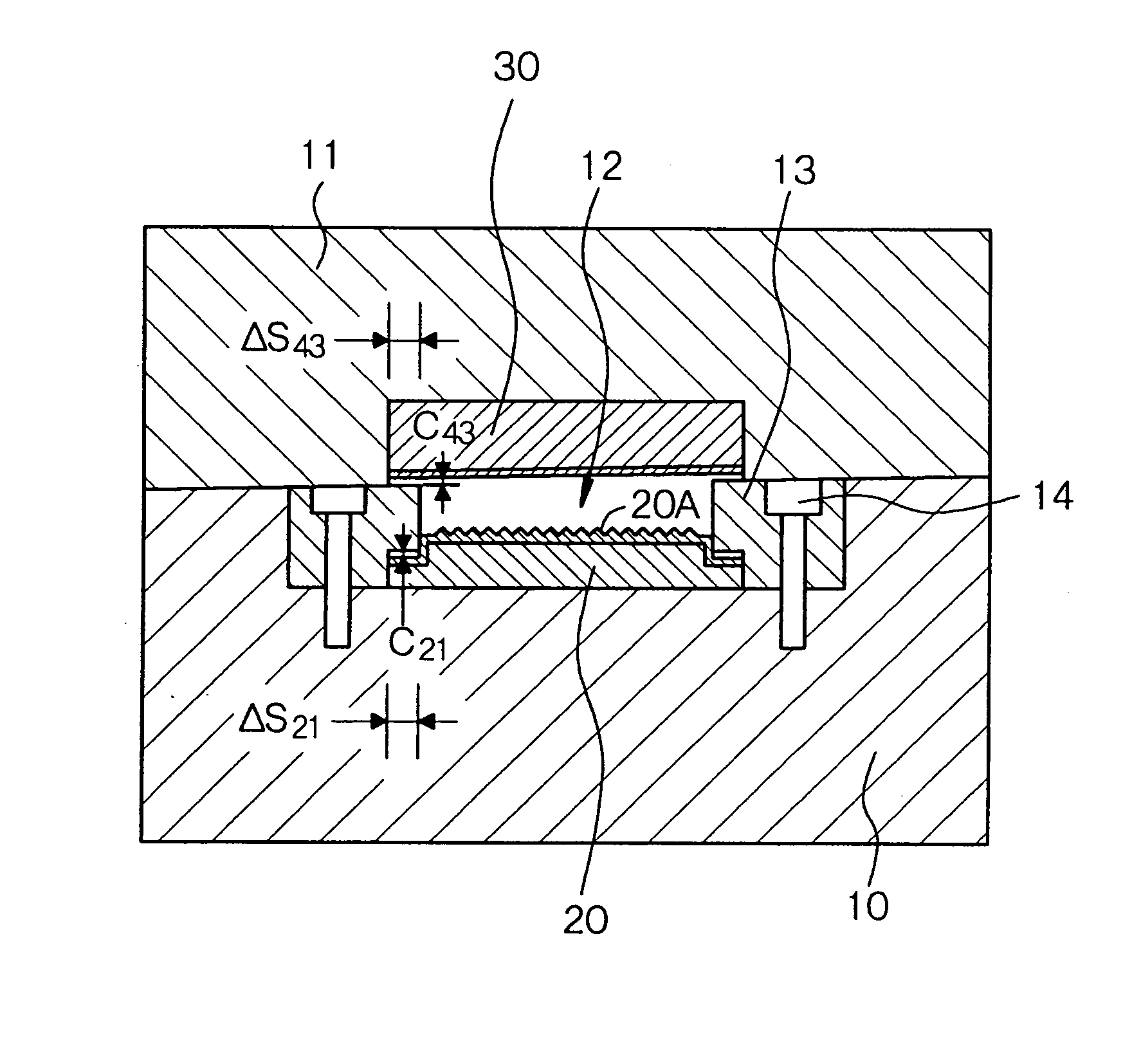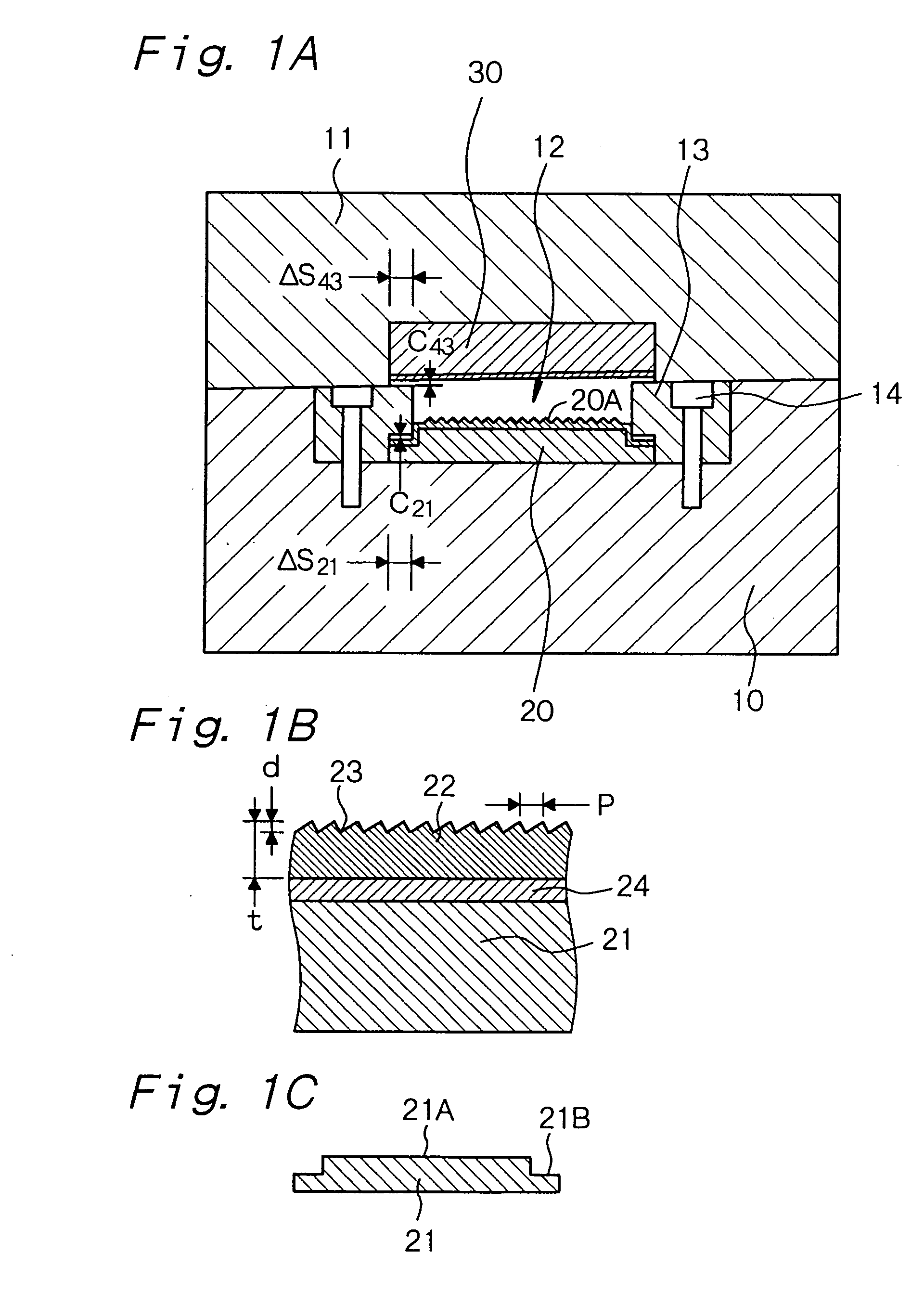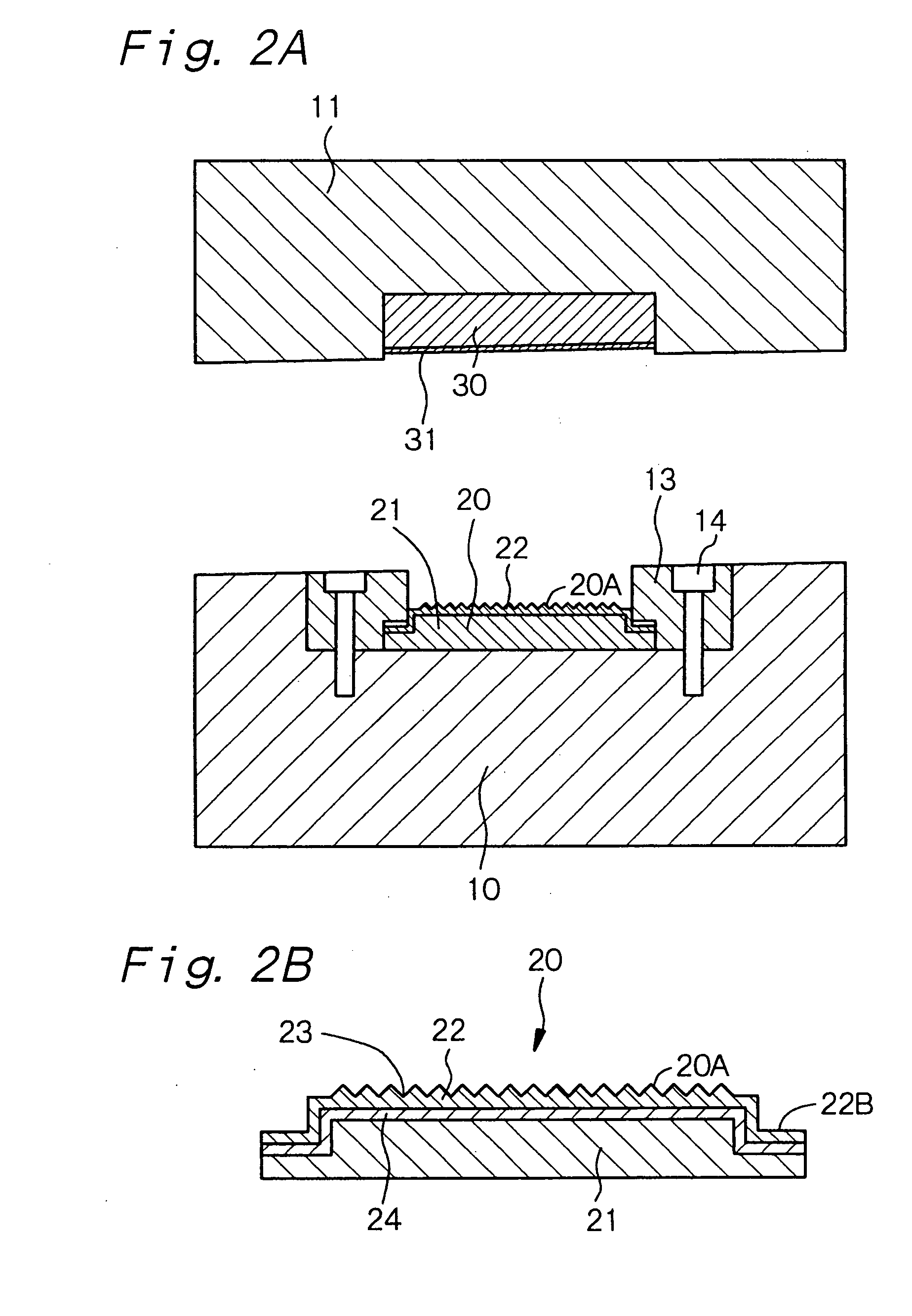Light guide plate made of transparent resin, molding method thereof, insert block, mold assembly, and area light apparatus
a technology of transparent resin and light guide plate, which is applied in the field of transparent resin light guide plate, molding method thereof, insert block, mold assembly, and area light apparatus, can solve the problems of large number of steps for assembling, large number of prism sheets, and inability to form prism-shaped concave-convex portions in surface portions of light guide plates, etc., to achieve accurate and reliable formation of desired concave portions or convex portions, and accurate and reliable formation of desired conca
- Summary
- Abstract
- Description
- Claims
- Application Information
AI Technical Summary
Benefits of technology
Problems solved by technology
Method used
Image
Examples
example 1
[0256] Example 1 is concerned with a light guide plate / area light apparatus according to the first / third aspects of the present invention, and an insert block / mold assembly / molding method according to the first / third aspects of the present invention. The insert block and the mold assembly in Example 1 are concerned with the insert block and the mold assembly having the first constitution of the present invention and further concerned with the second structure of the mold assembly, etc., of the present invention.
[0257]FIG. 1A and FIG. 2A show schematic cross-sectional views of the mold assembly in Example 1. The mold assembly has (A) a mold for forming a light guide plate made of a transparent resin, the mold comprising a first mold member (movable mold member) 10 and a second mold member (fixed mold member) 11 and in which a cavity 12 is formed when the mold is clamped, (B) a side-gate-type molten resin injection portion (not shown) provided for introducing a molten transparent res...
example 2
[0274] Example 2 is a variant of Example 1. An insert block 20 in Example 2 was fabricated by the following method. A second insert block 30 can be also fabricated by the same method.
[0275] First, a mixture of a zirconia powder and an yttrialite powder was press-molded and then calcined or sintered to prepare the insert block body 21. Then, that surface (surface 21A) of the insert block body 21 which faces the cavity 12 and that surface (surface 21B) which faces the cover plate 13 were subjected to blasting treatment using alumina particles, so that these surfaces 21A and 21B had a surface roughness Rz of 2 μm. Then, a 2 μm thick Ni—P layer was formed on the above surfaces 21A and 21B of the insert block body 21 by an electroless plating method, then, a 5 μm thick Ni layer was formed thereon by an electric plating method, and further, a 100 μm thick Ni—P layer was formed thereon by an electroless plating method. Then, the Ni—P layer was machined using a diamond tool having saw-blad...
example 3
[0279] Example 3 is also a variant of Example 1. Example 3 used partially stabilized electrically conductive zirconia ceramics to constitute an insert block body 21. Further, a metal layer 22 was formed on that surface 21A of the insert block body 21 which was to face the cavity. That is, specifically, the insert block 20 is made of partially stabilized zirconia (ZrO2—Y2O3) ceramics containing 8% by weight of Fe2O3 as an electrically conducting agent. Further, the content of Y2O3 as a partially stabilizing agent in the partially stabilized zirconia ceramics was 3 mol %. The above electrically conductive zirconia ceramics has a heat conductivity of approximately 3.8 J / (m·s·k) and a specific volume resistivity of 1×108 Ω·cm. The metal layer 22 is made of chromium (Cr). In Example 3, the metal layer 22 was formed on the entire surface of the insert block 20 by an electric plating method.
[0280] Other elements of the insert block of Example 3 can be the same as those of the insert block...
PUM
| Property | Measurement | Unit |
|---|---|---|
| height | aaaaa | aaaaa |
| height | aaaaa | aaaaa |
| height | aaaaa | aaaaa |
Abstract
Description
Claims
Application Information
 Login to View More
Login to View More - R&D
- Intellectual Property
- Life Sciences
- Materials
- Tech Scout
- Unparalleled Data Quality
- Higher Quality Content
- 60% Fewer Hallucinations
Browse by: Latest US Patents, China's latest patents, Technical Efficacy Thesaurus, Application Domain, Technology Topic, Popular Technical Reports.
© 2025 PatSnap. All rights reserved.Legal|Privacy policy|Modern Slavery Act Transparency Statement|Sitemap|About US| Contact US: help@patsnap.com



